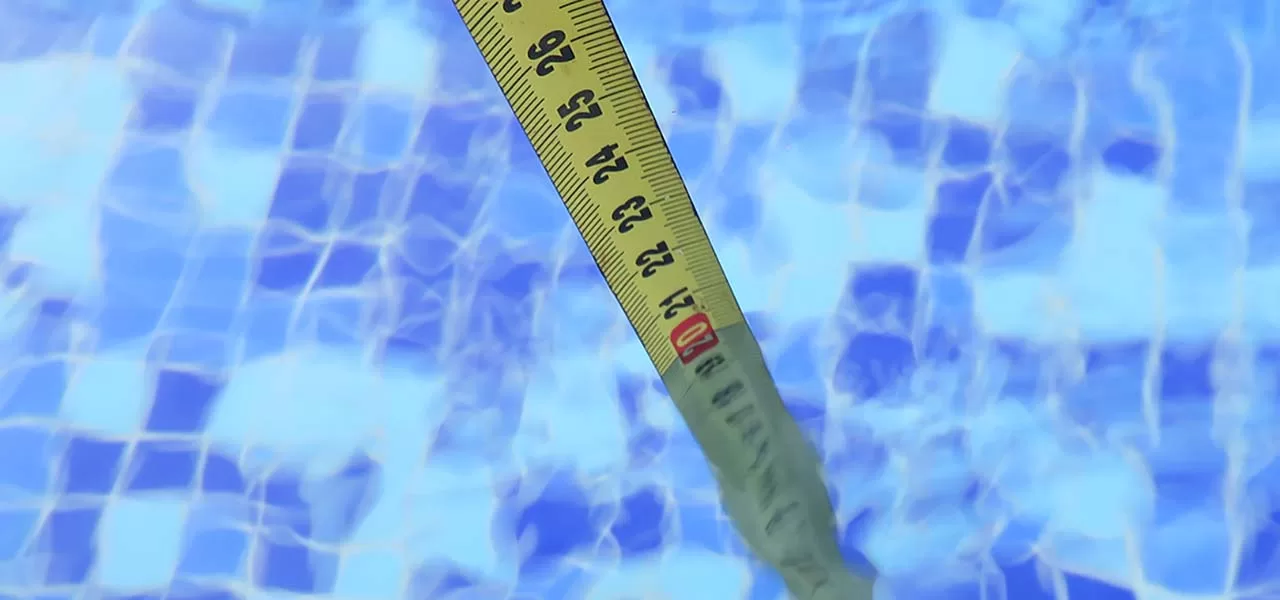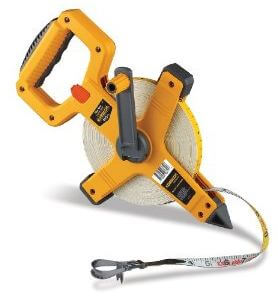FREE Standard Shipping On All Orders $100 or More!*

How to Measure For an Above Ground Pool Liner

An often-overlooked step in replacing your aboveground pool liner, measuring your pool properly will prevent undue surprises.
This is because not all pools will measure to exactly the size that a pool owner thinks they have. Secondly, installation variables can cause the walls to bow out, or bow inward.
If you are planning a replacement pool liner, take a few moments to get an accurate measurement of your pool diameter and depth. Then you can confidently place an order for your replacement pool liner and aboveground liner installation supplies.
Round Pool Liners:
For round pool liners, we want to measure the diameter of the pool in two opposite locations. If the pool were a clock-face, measure at 12 and 6 o'clock, and at 9 and 3 o'clock. To rule out the possibility of bowed walls, measure each diameter twice, at the top of the wall and at the bottom of the wall. You will need two people to make the measurement easier and most accurate.
Aboveground pool liners usually have a standard diameter of 15, 18, 21, 24, 27, 30 or 33 feet. However, measure carefully to determine whether you can use one of our stock replacement liners for aboveground pools, or if a custom liner is needed.
Now measure the depth of your aboveground pool liner. Many pools have a foam cove or troweled sand ledge up against the pool wall. When measuring depth, make sure to measure to the absolute pool floor. Similarly, at the top of the pool wall, be careful to measure to the where the liner snaps into the track (beaded liners) or where it goes over the wall (overlap liners). If you measure to the top rail or the horizontal top of the pool wall, you will be adding another inch or so to the depth.
Aboveground pool liners usually have a standard depth of 48, 52 or 54 inches. However, this can vary depending on the amount of floor material (sand) that was added during the last liner replacement.
Generally speaking, 1-2 inches of difference in depth or diameter may not matter much, but more than this and you may have trouble with the install. If you have doubts, give our helpful pool experts a call to reduce the risk of trying to install a pool liner that just doesn't quite fit.
Oval Pool Liners:
For oval pool liners, we measure in the same manner (carefully), at 9-3, 12-6 o'clock. Make sure that on the oval ends, you are measuring at the apex of the radius curve. Remember to measure from wall to wall, keeping the measuring tape perpendicular to the floor.
With oval pools, there can be more of a chance of a bowed wall, so be sure to measure the diameters from both the top and the bottom of the pool wall. When measuring the depth of your aboveground pool, take a measurement from several locations around the pool to make sure that your floor is not uneven.
For overlap liners, if the amount of overlap on the outside of the pool wall is uneven, this is another clue that the floor may be uneven. In this case, generally some floor work can be done; more sand can be added to level out the pool floor. But if you add too much sand you are raising the floor and reducing the depth of your pool, as well as the needed depth of your new pool liner.
Rectangular Pool Liners:
There are not too many rectangular aboveground pools out there, but if you have one, it's likely a Kayak brand. For measuring rectangular aboveground liners, you will measure in the same manner as above, choosing a center line point to measure from end to end and side to side. One point of distinction to rectangular pool liners is the radius of the corner. In some cases, the corner can be 90 degrees where the end meets the side, but usually they have a small curve or radius in the corners.

To measure a radius corner, you can use a framing square, or two yardsticks, laid perpendicular to each other. Measure the distance from where the curve begins to the where the yard sticks meet. With the yard sticks laid next to the pool edge, you should be able to see where the curve begins to pull away from the straight yard stick. A 6-inch radius is common, but it can be larger or smaller.
Deep-Dish Pools:
If your aboveground pool has a deep end or a dished out center, also known as a bowl, you may need a custom liner. Aboveground pool liners are made for flat bottom pools. One exception to this are pools made by Doughboy, which can use what's called an expandable liner. This liner will stretch into place to fit a deeper center section. If your aboveground pool has a deep(er) section, you will need to measure the depth at the deepest point. Then, give us a call to discuss ordering and installing a liner into an aboveground pool with a deep area.
And that's about all there is to measuring for replacement vinyl liners. You may be surprised to find that your pool is bigger or smaller than you thought! I know this to be the case, because every year we have a couple of customers who order mistakenly, and unfortunately, once you pull the liner out of the box and drag it around on the sand, trying to make it fit, it's non-returnable. Measure carefully and if you have any questions, please give us a call. We'd love to help you select the correct replacement pool liner size for your pool.